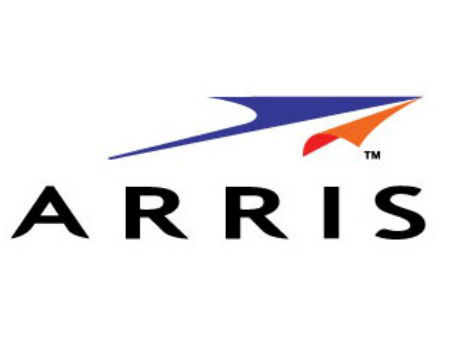Charter, AT&T Join Arris’s Top Customer List

Displaying the sort of customer diversity it sought through its acquisition of Motorola Home last year, Arris said Charter Communications and AT&T joined its list of customers that drove 10% or more of revenues during its better-than-expected first quarter.
Regular Arris contributors Comcast ($203 million/16.6%) and Time Warner Cable $159 million/13%) topped that list, but new to the 10%-or-greater club in the first quarter were Charter ($137 million/11.2%) and AT&T ($134 million/11%). Verizon Communications, which represented 12.5% of Arris sales in the fourth quarter thanks to purchases of new set-tops, did not make the first quarter batch, likely because of slower video subscriber growth (+57,000) in the period.
“We are clearly off to a great start this year,” Bob Stanzione, Arris’s chairman and CEO Bob Stanzione said on Tuesday’s earnings call. Arris’s first quarter results and second quarter results beat Wall Street estimates, causing shares to spike $3.22 (12.52%) to $28.94 each in late morning trading Wednesday.
He said Arris saw “strong demand across the board” in the quarter, with big orders coming from modems, gateways, set-tops and other consumer premises equipment (CPE) and from the E6000, company’s new flagship cable modem termination system (CMTS) that will eventually add video edge QAM components and become a fully integrated Converged Cable Access Platform.
With respect to Charter, National Alliance Capital Markets analyst Brian Coyne suggested in a research note Wednesday that the “recently underwent a significant upgrade to its DOCSIS headend equipment” across a portion of its footprint, swapping out Cisco Systems CMTS gear in favor of the Arris E6000 and equipment from Casa Systems.
Arris sales in the CPE segment rose 4% from the previous quarter, though direct contribution was down 1% due in part to high demand for lower-cost Digital Transport Adapters (DTAs), which are simple, one-way “channel zappers” that some MSOs are relying on to facilitate all-digital upgrades. Overall, set-top unit shipments, thanks to the rise in DTA sales, rose 11% versus the fourth quarter.
Stanzione said Arris also had “significant shipments” of the XG1, the whole-home, IP-capable HD-DVR that Comcast is currently featuring in its X1 platform. He expects shipments of that device “to normalize at a healthy pace in the second quarter and beyond.”
Multichannel Newsletter
The smarter way to stay on top of the multichannel video marketplace. Sign up below.
Stanzione also said a “major telco” had awarded Arris with its first Ultra HD/4K set-top deal.
For broadband CPE, unit shipments rose 20% over the previous quarter, with DOCSIS 3.0 now representing 93% of modem/gateway shipments, with 58% of those being Wi-Fi-enabled. In the fourth quarter, 87% of shipments were DOCSIS 3.0, and 58% were Wi-Fi-enabled.
Another bright spot was the E6000, which is now deployed in systems reaching more than 5 million subscribers, up from about 2 million by the end of 2013. However, some “supply constraints” in the period caused orders worth $20 to $30 million to slip into the second quarter.
“With what I can see right now, I believe 2014 is shaping up to be a very impressive year,” Stanzione said.
However, some analysts on the call wondered if Arris can sustain its growth rate.
Arris isn’t providing guidance beyond the second quarter, but Stanzione said the third quarter “is shaping up very nicely,” but acknowledged that the fourth quarter is “always a bit dicey…sometimes that are up, sometimes they are down.”
In a research note issued Wednesday, Raymond James analyst Simon Leopold upgraded Arris to “Strong Buy” from “Outperform,” and increased his target price to $37 per share from $31.50 per share.
Coyne noted that Arris “has blown through its now stale-looking $5B run-rate target” and is poised to eclipse $6 billion in 2015. He also reiterated his “Buy” rating on Arris, and raised the 12-month target to $36 from $32.
“Arris remains our top pick to play the global video and broadband spending cycle as cable operators and telcos revolutionize their networks and their service offerings,” Coyne wrote.
